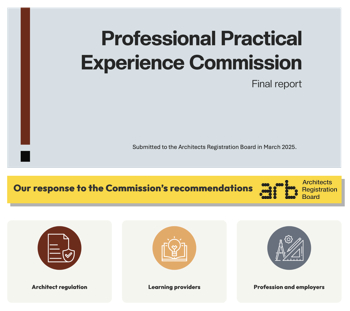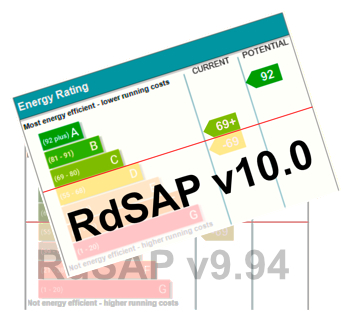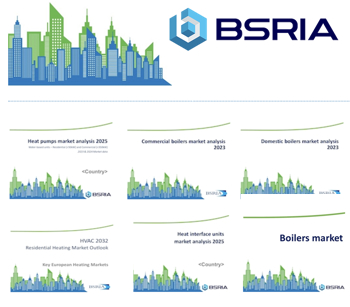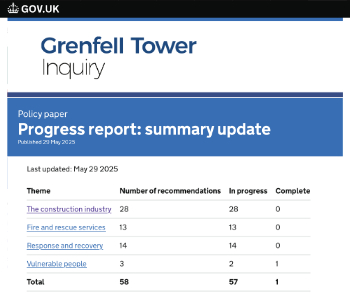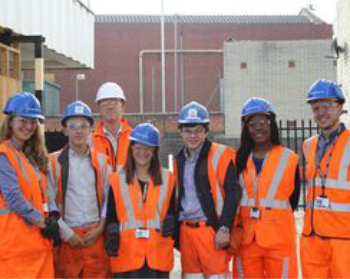Building control - regulations and procedures
Contents |
[edit] Introduction
The first set of national building standards was introduced in 1965. Now known as the Building Regulations, they set out:
- What qualifies as ‘building work’ and so falls under the control of the regulations.
- What types of buildings are exempt (such as temporary buildings).
- The notification procedures that must be followed when starting, carrying out, and completing building work.
- Requirements for specific aspects of building design and construction.
[edit] Building regulations
In England, the Ministry of Housing, Communities and Local Government (MHCLG) is responsible for the Building Regulations 2010 and The Building (Approved Inspectors etc.) Regulations 2010. The regulations apply to most new buildings and many alterations to existing buildings. A series of approved documents provide general guidance about how specific aspects of building design and construction can comply with the Building Regulations.
For more information see: Building regulations.
It is an offence to contravene the building regulations, or to start work that requires a building regulations application without submitting an application, or occupying or using a new building without approval. Failure to comply with the Building Regulations can result in a fine and/or an enforcement notice requiring rectification of the works. There is also a regularisation process for getting approval for works that have been carried out without approval.
[edit] Procedure
The building regulations require that a project's compliance is independently verified. Building control bodies (BCBs) are responsible for checking building work to verify it complies with the regulations. This includes new buildings, alterations, installations and extensions. Historically, this verification could only be carried out by local authorities, however, it can now also be provided by privately appointed approved inspectors.
For more information see: Building control officer.
Generally on larger, new-build projects, a 'full plans' application will be made, meaning that full details of the proposed building works are submitted for approval before the works are carried out.
For more information, see Full plans.
On small projects, or when changes are made to an existing building, approval may be sought by giving a 'building notice'. In this case, a building inspector will approve the works as they are carried out by a process of inspection.
For more information, see Building notice.
It is now also possible for competent persons to self-certify that certain work complies with the building regulations without submitting a building notice or incurring local authority fees.
For more information see: Competent person self-certifications schemes.
[edit] Enforcement
A local authority has a general duty to enforce the building regulations in its area and will seek to do so by informal means wherever possible. If informal enforcement does not achieve compliance with the regulations the local authority has two formal enforcement powers which it may use in appropriate cases:
- If a person carrying out building work contravenes the Building Regulations, the local authority may prosecute them in the Magistrates' Court where an unlimited fine may be imposed (sections 35 and 35A of the Building Act 1984). Prosecution is possible up to two years after the completion of the offending work.
- Alternatively, or in addition, the local authority may serve an enforcement notice on the building owner requiring alteration or removal of work which contravenes the regulations (section 36 of the 1984 Act). If the owner does not comply with the notice the local authority has the power to undertake the work itself and recover the costs of doing so from the owner.
For more information see: What happens if you fail to comply with building regulations.
[edit] Reform
Building control has been subject to scrutiny following the Grenfell Tower fire in 2017.
On 16 May 2018, Building a Safer Future, Independent Review of Building Regulations and Fire Safety: Final Report, was published, setting out more than 50 recommendations for government as to how to deliver a more robust regulatory system. The recommendations of the report included a new regulatory framework for multi-occupancy higher-risk residential buildings (HRRBs) that are 10 storeys or more in height, and a new Joint Competent Authority (JCA) comprising Local Authority Building Standards, fire and rescue authorities and the Health and Safety Executive to oversee better management of safety risks.
For more information, see Hackitt review of the building regulations and fire safety, final report.
In July 2020, the ‘Future of building control working group’ published 11 key recommendations for the future oversight and regulation of the profession and Building Control Bodies including:
- Steps to simplify and unify building control legislation, process and procedures.
- An independent designated body to oversee professional registration and organisational audit.
- A new competence framework to cover all persons working in building control including those working on higher risk buildings in scope of the new regulator.
- A unified pan-industry code of conduct for all Building Control Bodies and professionals.
- A unified pan-industry career structure to set expectations of competence across the building control sector.
[edit] Related articles on Designing Buildings Wiki
- Approved documents.
- Approved inspector.
- Building control body.
- Building control performance standards.
- Building notice.
- Building Regulations Advisory Committee (BRAC).
- Building regulations completion certificate.
- Building regulations inspection.
- Building warrant (Scotland).
- Competent person schemes.
- Competent person.
- Do the building regulations apply to existing buildings?
- Failure to comply with the building regulations.
- Full plans.
- How long it takes to get building regulations approval and how long it lasts.
- Independent review of the building regulations and fire safety.
- Local Authority Building Control.
- Scottish building standards.
- The Building Act.
- The difference between planning permission building regulations approval.
- Welsh building regulations.
- What approvals are needed before construction begins.
Featured articles and news
Professional practical experience for Architects in training
The long process to transform the nature of education and professional practical experience in the Architecture profession following recent reports.
A people-first approach to retrofit
Moving away from the destructive paradigm of fabric-first.
International Electrician Day, 10 June 2025
Celebrating the role of electrical engineers from André-Marie Amperè, today and for the future.
New guide for clients launched at Houses of Parliament
'There has never been a more important time for clients to step up and ...ask the right questions'
The impact of recycled slate tiles
Innovation across the decades.
EPC changes for existing buildings
Changes and their context as the new RdSAP methodology comes into use from 15 June.
Skills England publishes Sector skills needs assessments
Priority areas relating to the built environment highlighted and described in brief.
BSRIA HVAC Market Watch - May 2025 Edition
Heat Pump Market Outlook: Policy, Performance & Refrigerant Trends for 2025–2028.
Committing to EDI in construction with CIOB
Built Environment professional bodies deepen commitment to EDI with two new signatories: CIAT and CICES.
Government Grenfell progress report at a glance
Line by line recomendation overview, with links to more details.
An engaging and lively review of his professional life.
Sustainable heating for listed buildings
A problem that needs to be approached intelligently.
50th Golden anniversary ECA Edmundson apprentice award
Deadline for entries has been extended to Friday 27 June, so don't miss out!
CIAT at the London Festival of Architecture
Designing for Everyone: Breaking Barriers in Inclusive Architecture.
Mixed reactions to apprenticeship and skills reform 2025
A 'welcome shift' for some and a 'backwards step' for others.







